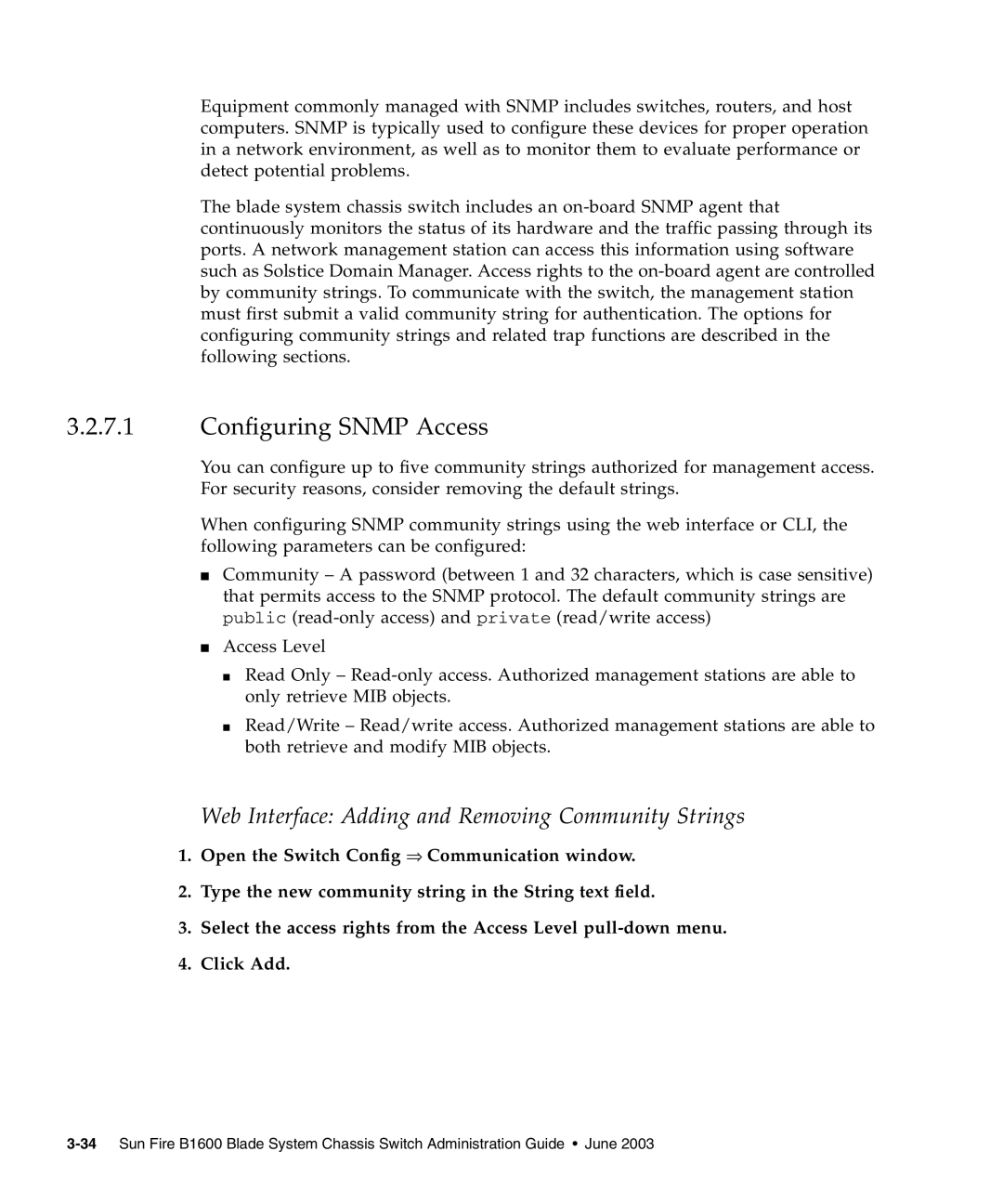Equipment commonly managed with SNMP includes switches, routers, and host computers. SNMP is typically used to configure these devices for proper operation in a network environment, as well as to monitor them to evaluate performance or detect potential problems.
The blade system chassis switch includes an
3.2.7.1Configuring SNMP Access
You can configure up to five community strings authorized for management access. For security reasons, consider removing the default strings.
When configuring SNMP community strings using the web interface or CLI, the following parameters can be configured:
■Community – A password (between 1 and 32 characters, which is case sensitive) that permits access to the SNMP protocol. The default community strings are public
■Access Level
■Read Only –
■Read/Write – Read/write access. Authorized management stations are able to both retrieve and modify MIB objects.
Web Interface: Adding and Removing Community Strings
1.Open the Switch Config ⇒ Communication window.
2.Type the new community string in the String text field.
3.Select the access rights from the Access Level
4.Click Add.
